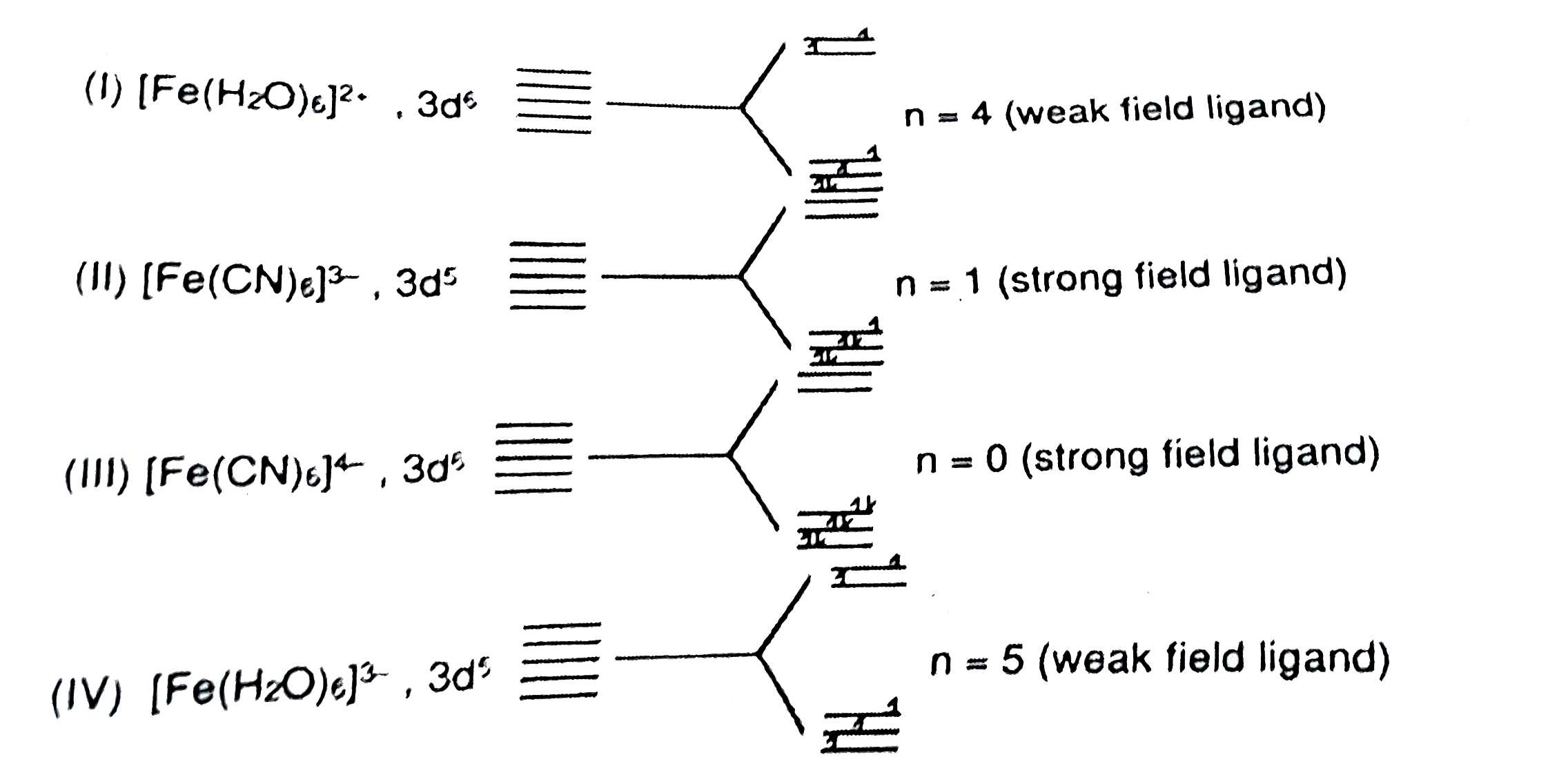Arrange the following in order of decreasing number of unpaired electrons :
i. [Fe(H2O6)]2+
ii. [Fe(CN)6]3−
iii. [Fe(CN)6]4−
iv. [Fe(H2O)6]3+
IV,I,II,III
I,II,III,IV
III,II,I,IV
II,III,I,IV
The correct Answer is:A
Topper's Solved these Questions
- COORDINATION COMPOUNDSBOOK - RESONANCE ENGLISHCHAPTER - COORDINATION COMPOUNDSEXERCISE - Additional Problem for Self Practice (APSP) Part-II
61 Videos
- COORDINATION COMPOUNDSBOOK - RESONANCE ENGLISHCHAPTER - COORDINATION COMPOUNDSEXERCISE - Additional Problem for Self Practice (APSP) Part-III Subjected Question
7 Videos
- COORDINATION COMPOUNDSBOOK - RESONANCE ENGLISHCHAPTER - COORDINATION COMPOUNDSEXERCISE - Exercise-3 Online Exam
22 Videos
- CHEMISTRY IN EVERYDAY LIFEBOOK - RESONANCE ENGLISHCHAPTER - CHEMISTRY IN EVERYDAY LIFEEXERCISE - ORGANIC CHEMISTRY(Chemistry in every day life)
31 Videos
- D & F BLOCK ELEMENTSBOOK - RESONANCE ENGLISHCHAPTER - D & F BLOCK ELEMENTSEXERCISE - ORGANIC CHEMISTRY(Aldehydes , Ketones, Carboxylic acid)
15 Videos
Similar Questions
Coordination compounds plays many important roles in animals and plants. The are essential in the storage and transport of oxygen as electrons transfer agents as catalysts and in photosynthesis Wide range of application in daily life takes place through formation of complexes Photographic fixing qualitative and quantitative analysis purification of water metallurgical extraction are some specific worth mentioning
Arrange of the following in order of decreasing number of unpaired electrons
(I) [Fe(H2O))6]2+
(II) [Fe(CN)6]3−
(III) [Fe(CN)6]4−
(IV) [fe(H2O)6]3+
(a) IV,I,II,III
(b) I,II,III,IV
(c) III,II,IIV
(d) II,III,I,IV .
View Solution[Fe(H2O)6]3+and[Fe(CN)6]3− differ in
View Solution[Fe(H2O)6]2+ and [Fe(CN)6]4−differ in :
View Solution[Fe(H2O)6]2+ and [Fe(CN)6]4−differ in :
View SolutionThe hybridisation and unpaired electrons in [Fe(H2O)2+6] ion are :
View SolutionArrange the following complexes in order of increasing crystal field splitting .
[Fe(H2O)6]2+,[Fe(H2O)6]3+,[FeCl6]4− .
View SolutionThe EAN of iron in [Fe(CN)6]3− is
View SolutionFe(CN)2⏐↓+KCN→K3Fe(CN)6
View SolutionWith the help of crystal field theory, predict the number of unpaired electrons in [Fe(H2O)6]2+
View Solution3KCN+Fe(CN)3⏐⏐↓→K3[Fe(CN)6]
View Solution

